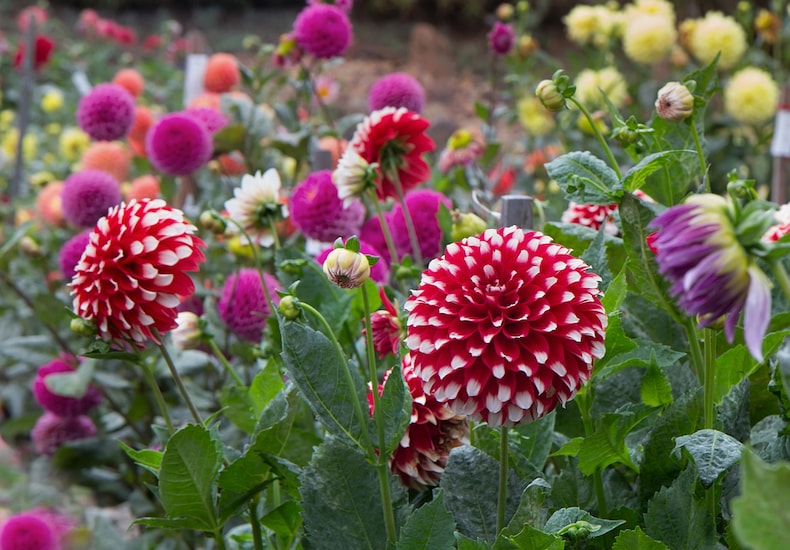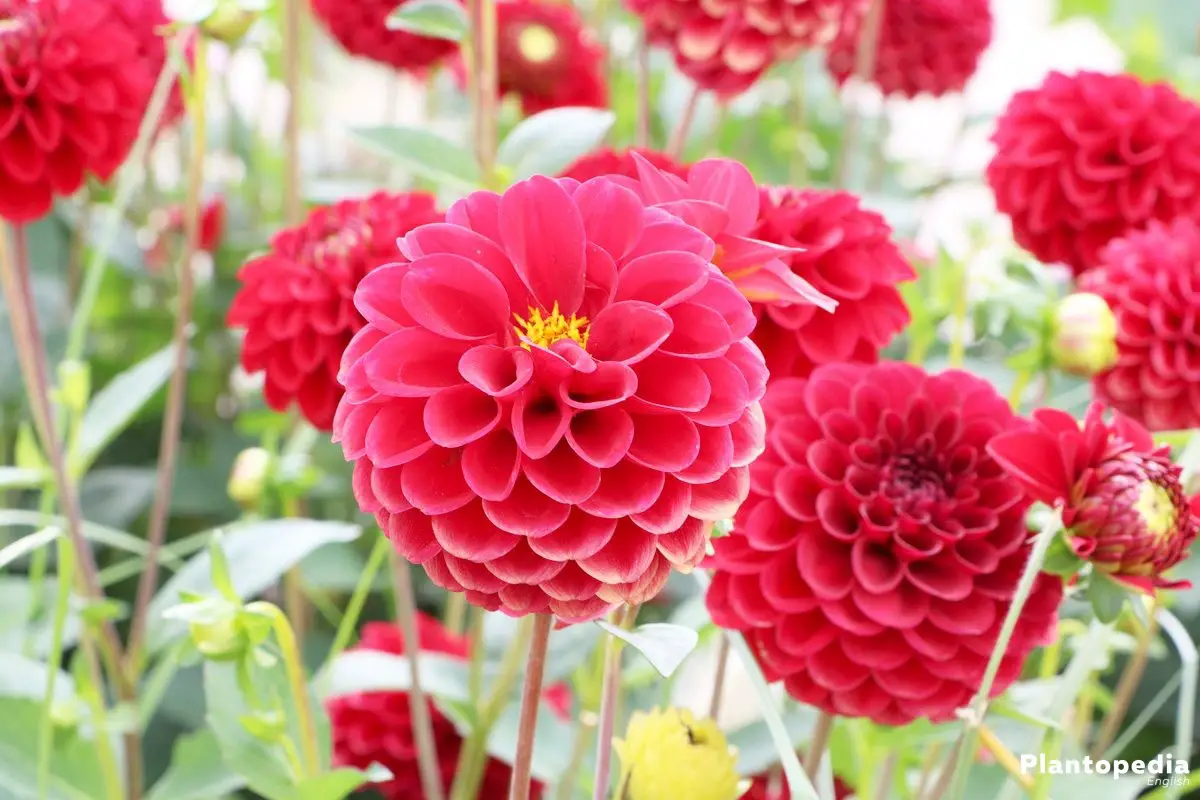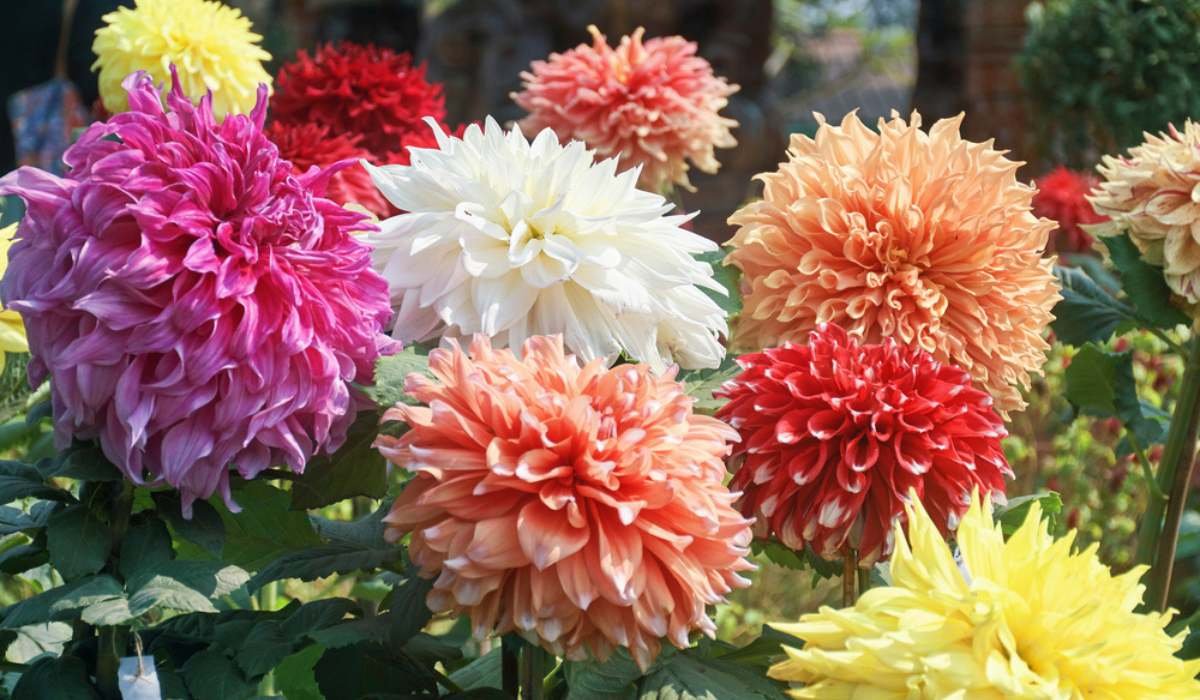Understanding Dahlia Planting Requirements
When it comes to growing stunning dahlias, understanding the basic requirements for these beautiful flowers is crucial. Dahlias need a combination of sunlight, soil, and temperature to thrive, and these factors play a significant role in determining the best place to plant them. To ensure optimal growth, dahlias require at least six hours of direct sunlight per day. This is essential for photosynthesis, which promotes healthy growth and blooming. However, in warmer climates, providing some afternoon shade can help prevent scorching of the leaves and flowers.
In addition to sunlight, dahlias need well-draining soil that is rich in organic matter. A slightly acidic to neutral soil pH (around 6.0-7.0) is ideal for dahlias. If the soil is too dense or poorly draining, it can lead to root rot and other problems. To create an optimal growing environment, it’s essential to test the soil and amend it if necessary. Adding compost or well-rotted manure can help improve soil structure and fertility.
Temperature is also an important factor to consider when planting dahlias. These flowers thrive in temperatures between 65°F (18°C) and 85°F (29°C). Avoid planting dahlias in areas with standing water or where water tends to collect, as this can lead to root rot and other issues. By understanding these basic requirements, gardeners can choose the best place to plant their dahlias and provide them with the conditions they need to thrive.
Considering these factors, the best place to plant dahlias is often in a location that receives full sun to partial shade, has well-draining soil, and is protected from strong winds. By selecting a spot that meets these conditions, gardeners can enjoy the beauty and elegance of dahlias in their garden. Whether you’re a seasoned gardener or just starting out, understanding the basic requirements for dahlias is essential for growing these stunning flowers.
How to Choose the Perfect Spot for Your Dahlias
Once you understand the basic requirements for growing dahlias, it’s time to assess your garden’s conditions and choose the best location for planting. To find the perfect spot, consider the following factors: wind protection, soil drainage, and accessibility. Dahlias can grow quite tall, so it’s essential to provide support to prevent them from toppling over in the wind. Look for a location that offers some protection from strong winds, such as a spot near a fence or a group of trees.
Soil drainage is also crucial for healthy dahlia growth. Avoid planting in areas with standing water or where water tends to collect, as this can lead to root rot and other problems. Instead, choose a location with well-draining soil that allows excess water to drain away from the roots. If your soil is heavy clay or prone to waterlogging, consider raising the bed or adding organic matter to improve drainage.
Accessibility is another important factor to consider when choosing a location for your dahlias. Make sure the spot is easily accessible for maintenance, such as watering, fertilizing, and deadheading. Avoid planting in areas that are difficult to reach, as this can lead to neglect and poor growth.
When evaluating potential locations, also consider the amount of sunlight the area receives. While dahlias can tolerate some shade, they generally require at least six hours of direct sunlight per day to thrive. If the area receives less sunlight, consider using a variety of dahlia that is tolerant of shade, such as ‘Bishop of Llandaff’ or ‘David Howard’.
By carefully evaluating your garden’s conditions and considering these factors, you can choose the best place to plant your dahlias and provide them with the conditions they need to thrive. Remember, the key to growing stunning dahlias is to provide them with the right environment, and with a little planning and preparation, you can enjoy these beautiful flowers in your garden.
The Benefits of Planting Dahlias in a Sunny Location
When it comes to growing dahlias, sunlight is one of the most critical factors to consider. Dahlias need full sun to partial shade to thrive, and planting them in a sunny location can have a significant impact on their growth and development. Sunlight provides the energy that dahlias need to produce the nutrients that fuel their growth, so it’s essential to choose a location that receives at least six hours of direct sunlight per day.
Planting dahlias in a sunny location can also impact their blooming and overall health. Dahlias that receive plenty of sunlight tend to produce more blooms and have a more vibrant color. This is because sunlight triggers the production of chlorophyll, which is essential for photosynthesis and the development of flowers. Additionally, sunlight can help to prevent disease and pests, which can be more prevalent in shady areas.
However, it’s essential to note that too much sunlight can be detrimental to dahlias. In warmer climates, it’s best to provide some afternoon shade to prevent scorching of the leaves and flowers. This can be achieved by planting dahlias in a location that receives morning sun and dappled afternoon shade.
When choosing the best place to plant dahlias, consider the amount of sunlight the area receives. If the area receives full sun, make sure to provide some protection from the intense heat. If the area receives partial shade, make sure to choose a variety of dahlia that is tolerant of shade. By providing the right amount of sunlight, you can help your dahlias thrive and produce stunning blooms.
In addition to sunlight, make sure to provide your dahlias with well-draining soil and adequate water. This will help to ensure that they receive the nutrients they need to grow and thrive. By combining the right amount of sunlight with proper care and attention, you can create an optimal growing environment for your dahlias and enjoy their beauty for months to come.
Soil Considerations for Planting Dahlias
Soil quality and composition are crucial factors to consider when planting dahlias. Dahlias prefer well-draining, fertile soil that is rich in organic matter. The ideal soil pH for dahlias is between 6.0 and 7.0, which is slightly acidic to neutral. If the soil is too alkaline or too acidic, it can affect the availability of nutrients for the dahlias.
To determine the soil pH and nutrient levels, it’s essential to test the soil before planting dahlias. A soil test can provide valuable information on the soil’s pH, nutrient levels, and structure. Based on the test results, you can amend the soil to create an optimal growing environment for your dahlias.
Adding organic matter such as compost or well-rotted manure can help improve soil fertility and structure. This can also help to increase the soil’s water-holding capacity, which is essential for dahlias. Additionally, incorporating organic matter can help to support beneficial microorganisms in the soil, which can help to promote healthy root growth and development.
When choosing a location for your dahlias, also consider the soil’s drainage. Dahlias don’t like wet feet, so it’s essential to ensure that the soil drains well to prevent waterlogged soil. If the soil is heavy clay or prone to waterlogging, consider raising the bed or adding organic matter to improve drainage.
In addition to soil pH and nutrient levels, also consider the soil’s temperature. Dahlias prefer a soil temperature of around 60°F (15°C) to 70°F (21°C) for optimal growth. If the soil is too cold or too hot, it can affect the dahlias’ growth and development.
By understanding the soil requirements for dahlias and taking steps to create an optimal growing environment, you can help your dahlias thrive and produce stunning blooms. Remember, the best place to plant dahlias is in a location with well-draining, fertile soil that is rich in organic matter.
Planting Dahlias in Containers: A Great Alternative
For gardeners who don’t have a lot of space or want to add some flexibility to their garden design, planting dahlias in containers is a great alternative. Container-grown dahlias can thrive in small spaces, such as balconies, patios, or rooftops, and can be easily moved to different locations to suit changing sunlight patterns or to add a pop of color to different areas of the garden.
When choosing a container for your dahlias, make sure it is at least 12-18 inches deep and has good drainage holes to prevent waterlogged soil. A container with a wide mouth is also helpful, as it allows for easy access to the soil and roots. Consider using a container with a built-in water reservoir to help reduce watering frequency.
The soil for container-grown dahlias should be well-draining and fertile, with a pH between 6.0 and 7.0. A mix specifically designed for containers is best, as it will retain moisture but also drain excess water. Add a balanced fertilizer to the soil to promote healthy growth and blooming.
When planting dahlias in containers, make sure to leave enough space between each plant for proper air circulation and growth. A general rule of thumb is to plant dahlias 12-18 inches apart, depending on the variety. Water the soil gently but thoroughly after planting, and keep the soil consistently moist but not waterlogged.
One of the benefits of growing dahlias in containers is the ability to control the soil temperature. Dahlias prefer a soil temperature of around 60°F (15°C) to 70°F (21°C) for optimal growth. By using a container, you can move the dahlias to a location with the ideal soil temperature, even if the rest of the garden is too hot or too cold.
While container-grown dahlias require more frequent watering and fertilization, they can be a great option for gardeners who want to add some flexibility and creativity to their garden design. By following these tips and choosing the right container, soil, and location, you can enjoy stunning dahlias in even the smallest of spaces.
Common Mistakes to Avoid When Planting Dahlias
When planting dahlias, there are several common mistakes to avoid in order to ensure healthy growth and optimal blooming. One of the most common mistakes is planting dahlias too deeply. Dahlias should be planted so that the tubers are 2-4 inches below the soil surface, with the “eyes” or buds facing upwards. Planting too deeply can cause the tubers to rot, leading to poor growth and reduced blooming.
Another common mistake is planting dahlias in poorly draining soil. Dahlias don’t like wet feet, so it’s essential to ensure that the soil drains well to prevent waterlogged soil. If the soil is heavy clay or prone to waterlogging, consider raising the bed or adding organic matter to improve drainage.
Not providing enough support is another mistake to avoid when planting dahlias. Dahlias can grow quite tall, so it’s essential to provide support to prevent them from toppling over in the wind. Use stakes or a trellis to provide support, and tie the stems to the support using twine or clips.
Not deadheading regularly is another mistake to avoid. Deadheading involves removing spent blooms to encourage more blooming and prevent seed production. Regular deadheading can help to promote more blooms and keep the plants looking their best.
Finally, not protecting dahlias from pests and diseases is another mistake to avoid. Dahlias can be susceptible to pests such as aphids, slugs, and snails, as well as diseases such as powdery mildew and root rot. Use organic or chemical controls as needed to protect the plants and prevent damage.
By avoiding these common mistakes, you can help to ensure healthy growth and optimal blooming for your dahlias. Remember, the best place to plant dahlias is in a location with well-draining soil, full sun, and adequate support.
Expert Tips for Planting Dahlias in Your Region
While dahlias can be grown in a variety of regions, there are some specific considerations to keep in mind depending on your location. In areas with hot summers, it’s essential to provide dahlias with some afternoon shade to prevent scorching of the leaves and flowers. In areas with cool summers, dahlias may require more sunlight to thrive.
In regions with heavy clay soil, it’s essential to add organic matter to improve drainage and prevent waterlogging. In areas with sandy soil, dahlias may require more frequent watering to prevent drying out.
In areas with high humidity, dahlias may be more susceptible to fungal diseases such as powdery mildew. In areas with low humidity, dahlias may be more susceptible to pests such as aphids and whiteflies.
In regions with cold winters, dahlias may need to be lifted and stored in a frost-free location to protect the tubers from damage. In areas with mild winters, dahlias can be left in the ground and mulched to protect the tubers from frost.
By considering these regional factors, you can provide your dahlias with the best possible growing conditions and ensure optimal blooming and health. Remember, the best place to plant dahlias is in a location that provides the right combination of sunlight, soil, and temperature for your specific region.
Some specific region-specific tips for planting dahlias include:
In the Northeast, plant dahlias in a location with full sun and well-draining soil to prevent waterlogging.
In the South, plant dahlias in a location with partial shade and rich, fertile soil to promote healthy growth.
In the Midwest, plant dahlias in a location with full sun and well-draining soil to prevent waterlogging.
In the West, plant dahlias in a location with full sun and dry, well-draining soil to prevent waterlogging.
Conclusion: Finding the Best Place to Plant Your Dahlias
When it comes to growing stunning dahlias, finding the best place to plant them is crucial for optimal growth and blooming. By considering factors such as sunlight, soil, temperature, and wind protection, you can create an ideal environment for your dahlias to thrive.
Remember, the best place to plant dahlias is in a location that provides the right combination of sunlight, soil, and temperature for your specific region. Experiment with different planting locations to find the best spot for your dahlias, and don’t be afraid to try new things and adjust your approach as needed.
By following the tips and advice outlined in this article, you can create a beautiful and thriving dahlia garden that will provide you with stunning blooms all season long. Whether you’re a seasoned gardener or just starting out, with a little practice and patience, you can become a dahlia expert and enjoy the many rewards of growing these gorgeous flowers.
So why not give dahlias a try? With their stunning blooms and versatility in the garden, they’re a great addition to any garden. And with the right care and attention, you can enjoy their beauty for months to come.
Happy gardening!


:max_bytes(150000):strip_icc()/dahlias-in-bloom-897969480-5b15da89a9d4f900387c1077.jpg)




